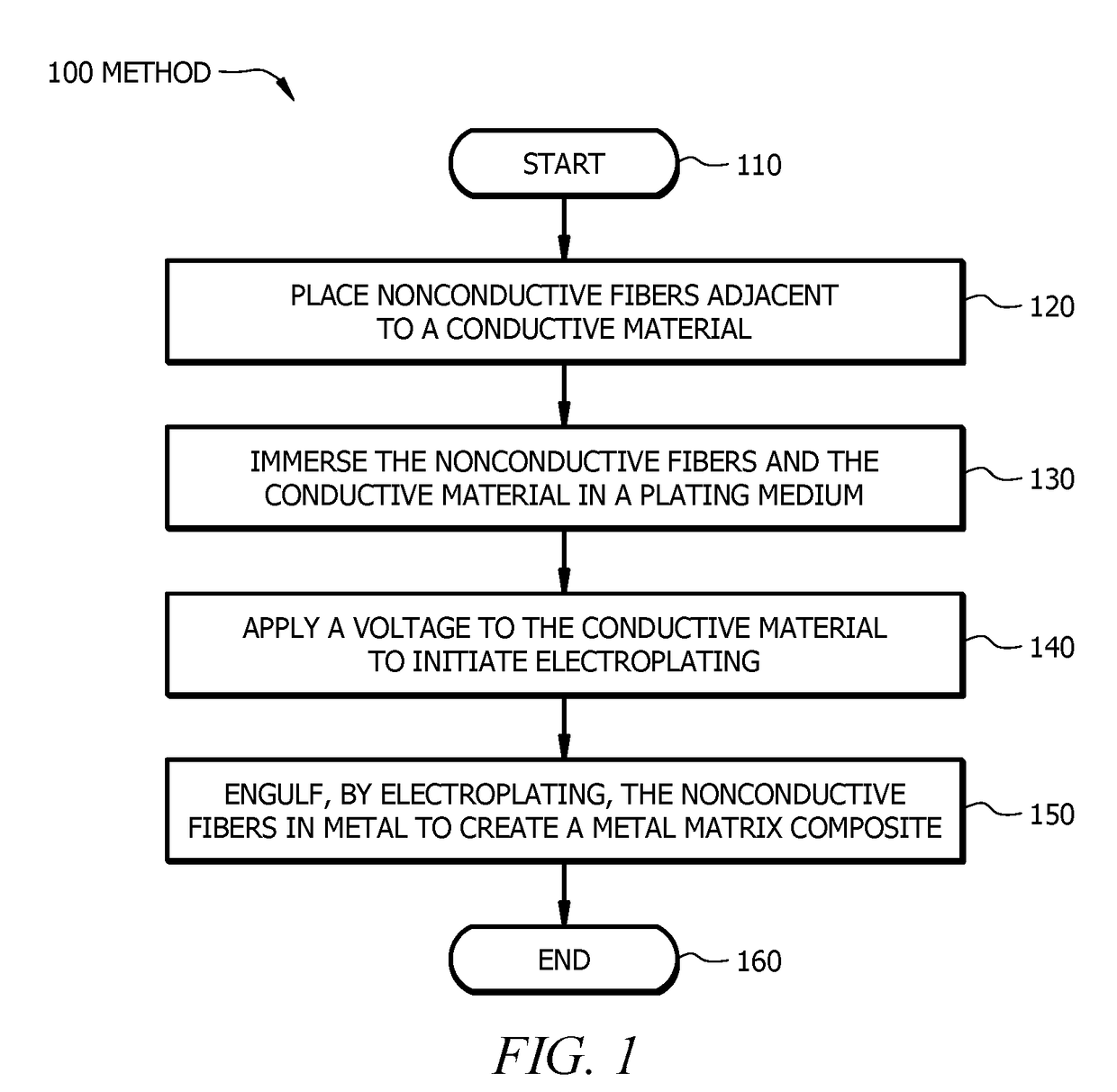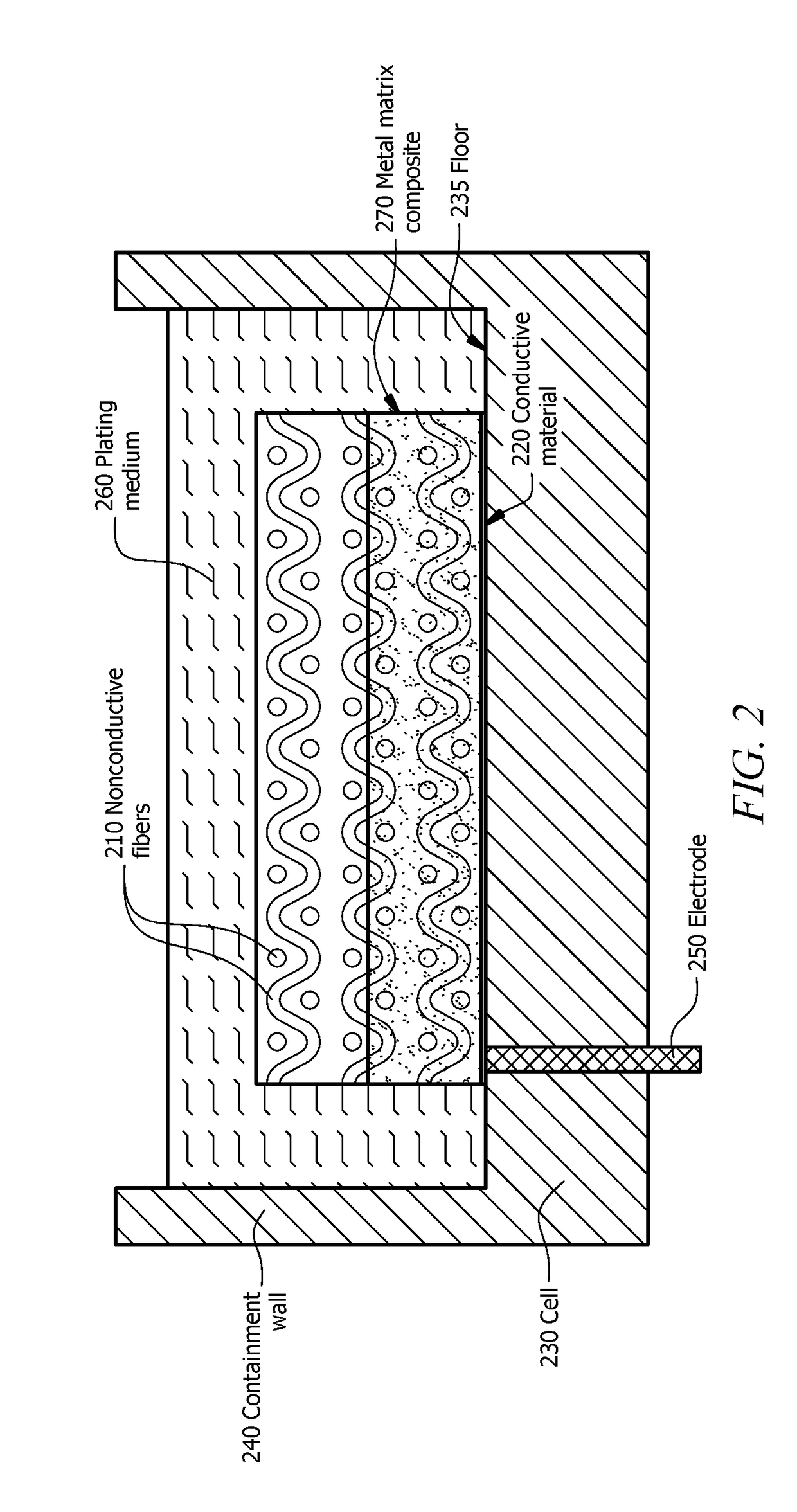Systems and Methods for Forming Metal Matrix Composites
a metal matrix composite and composite technology, applied in the field of metal matrix composites, can solve the problems of high thermal strain and the inability of most fibers to survive, and achieve the effect of reducing the disadvantages and eliminating the problems of forming metal matrix composites
- Summary
- Abstract
- Description
- Claims
- Application Information
AI Technical Summary
Benefits of technology
Problems solved by technology
Method used
Image
Examples
Embodiment Construction
[0020]To facilitate a better understanding of the present disclosure, the following examples of certain embodiments are given. The following examples are not to be read to limit or define the scope of the disclosure. Embodiments of the present disclosure and its advantages are best understood by referring to FIGS. 1 through 6, where like numbers are used to indicate like and corresponding parts.
[0021]Metal matrix composites exhibit superior characteristics over their polymer or ceramic competitors, such as conductivity, strength, ductility, and fracture toughness. However, processing metal matrix composites presents disadvantages. Current processing methods include melting the metal and infusing the metal into fibers or mixing the fibers with a metal powder and sintering to form a solid composite.
[0022]Melting the metal and infusing the metal into fibers exposes the fibers to a reactive metal at 1200 degrees Fahrenheit to 3000 degrees Fahrenheit. Most fibers cannot survive this envi...
PUM
 Login to View More
Login to View More Abstract
Description
Claims
Application Information
 Login to View More
Login to View More - R&D
- Intellectual Property
- Life Sciences
- Materials
- Tech Scout
- Unparalleled Data Quality
- Higher Quality Content
- 60% Fewer Hallucinations
Browse by: Latest US Patents, China's latest patents, Technical Efficacy Thesaurus, Application Domain, Technology Topic, Popular Technical Reports.
© 2025 PatSnap. All rights reserved.Legal|Privacy policy|Modern Slavery Act Transparency Statement|Sitemap|About US| Contact US: help@patsnap.com



